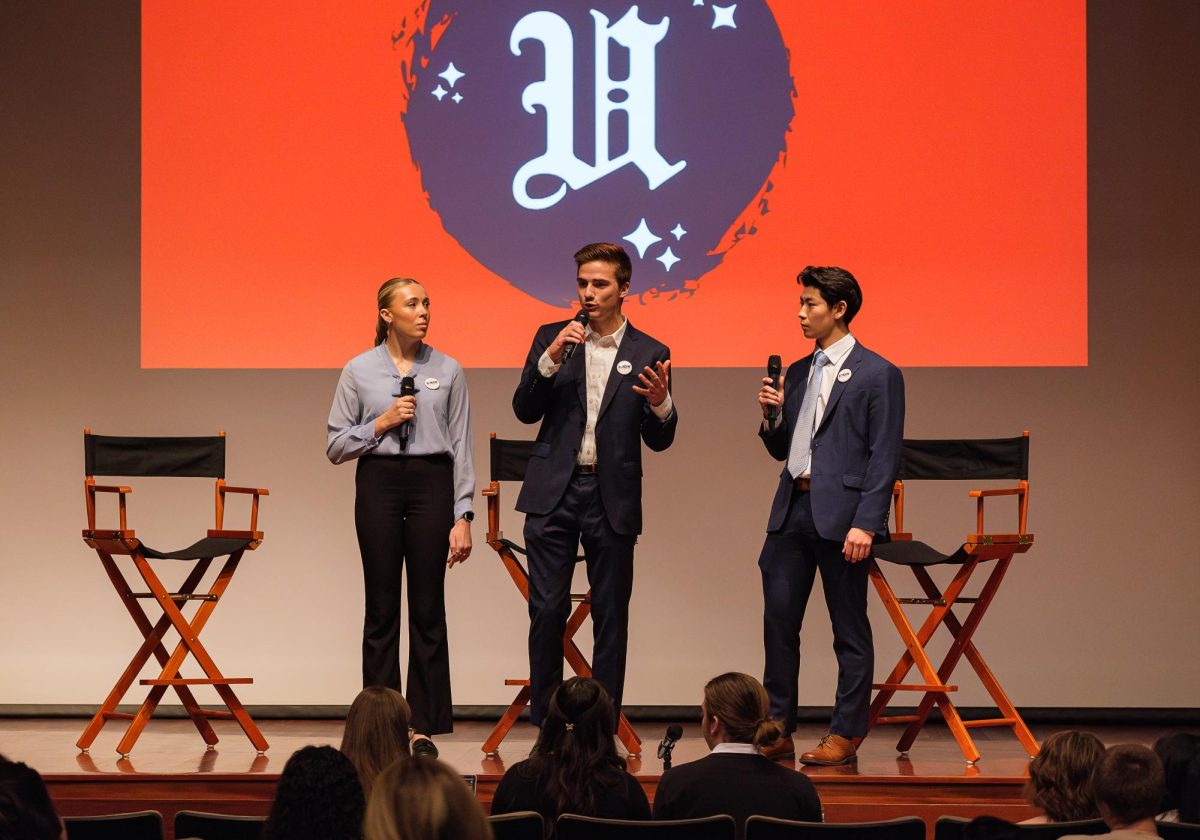This article was originally published in the Welcome Home print issue of The Daily Utah Chronicle, originally in stands on August 25, 2024. It has not been updated and some information may be out of date.
All enrolled students are members of The Associated Students of the University of Utah (ASUU). However, the U’s student government’s role remains unclear to many students.
What is ASUU?
ASUU aims to provide resources, host events and advocate for students, striving for transparency and inclusivity. ASUU has also initiated efforts to improve student engagement, including newly implemented campus suggestion boxes.
The Senate, comprising 18 students from various colleges, and the Assembly, with members proportional to college enrollment, form ASUU’s legislative branch.
Senate Chair Mercedes Johnson represents the College of Humanities. Assembly Chair Anna Locke, from the College of Social and Behavioral Sciences, primarily oversees budget allocation for student organizations.
The Judicial Branch, consisting of the attorney general and Supreme Court Justices, manages the ASUU Redbook, the organization’s constitution and bylaws.
The Executive Branch, led by President Joe Boyden and his cabinet, oversees numerous boards and initiatives.
Legislative Cycle
One of the more complex areas of ASUU is the legislative cycle. In an interview with the Daily Utah Chronicle, Anna Locke, assembly chair and representative for the College of Social and Behavioral Sciences, explained how ASUU’s legislative cycle works. Locke is a third-year student double majoring in economics and religious studies.
“A legislative cycle is typically one month, and we have a legislative submission deadline before the cycle starts,” Locke said. “During that time, anybody can submit legislation as long as it has an assembly and a Senate process sponsor, who they can find on our website.”
The legislative cycle aligns with the university calendar year, starting at the beginning of each month. Legislation must be submitted before the new cycle begins. There are four sessions monthly, with the Assembly convening every Tuesday.
Assembly representatives and senators write most legislation, but Locke hopes more students will submit legislation in future cycles.
After submission, the first session convenes on the first Tuesday of the month. This “rules committee meeting” involves Assembly chairs ensuring each proposed legislation complies with ASUU’s bylaws known as the “Redbook.”
“The Rules Committee meeting consists of the chair, the vice chair, the parliamentarian, the secretary, the treasurer, and the subcommittee chairs,” Locke said. “We review the legislation and any budget requests to ensure compliance with the Redbook.”
Once compliance is approved, the legislation moves to the second week, where ASUU subcommittees review it. The subcommittees include Graduate and Professional Development, Affinity and Advocacy, Arts and Recreation and Sports.
“We have four subcommittees that review the assets they received,” Locke said. “If additional information is needed, the subcommittee might discuss these concerns. The representative for the respective [Recognized Student Organization] would then reach out and offer suggestions.”
The General Assembly convenes during the third week to debate and approve legislation. For it to pass, half of the General Assembly must vote to approve legislation.
“We hold a General Assembly meeting where we discuss all the legislation,” Locke said. “We project the legislation on a screen, read through it as a group, have a period of questioning and then debate. We follow parliamentary procedure as closely as we can, similar to Robert’s Rules. After discussions, we vote on the legislation as a group.”
If no legislation from the previous week is debated and seen, the final week of the legislative cycle is reserved for another General Assembly.
“We only use that fourth week if we don’t get through our entire agenda,” Locke said. “We do get through all of our items within a cycle. Occasionally, we might table a bill for the next time if the RSO didn’t provide enough information.”
Assembly bills focus primarily on funding for Recognized Student Organizations and do not require Senate approval. On the other hand, Senate bills fund College Student Councils (CSC), with each college having its own CSC.
Joint resolutions or bills that address broader university issues, such as creating gender-inclusive bathrooms, must be approved by both the Assembly and the Senate. The order of approval is flexible, allowing either body to pass the legislation first.
Despite having separate budgets and responsibilities, the Assembly and Senate collaborate on university-wide projects. Efforts are underway to increase collaboration through joint meetings and workshops, which will enhance teamwork and drive effective change.
After legislative approval, bills often move to the executive branch, particularly those related to elections and broader university initiatives. The president has the power to veto legislation, which may also be overridden by the Senate.




